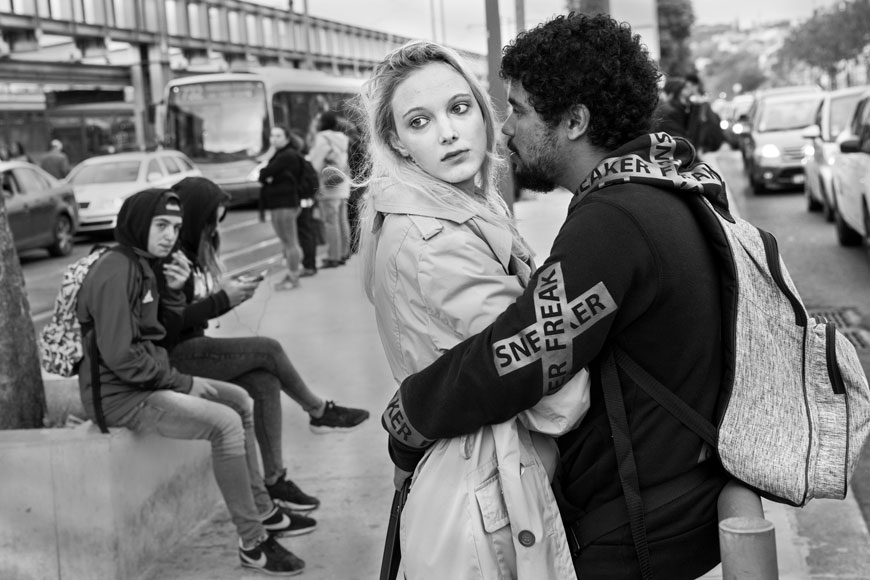The Facts About Street Photographers Uncovered
The Definitive Guide for Street Photographers
Table of ContentsThe Definitive Guide for Street PhotographersThe 9-Minute Rule for Street PhotographersNot known Incorrect Statements About Street Photographers Some Known Details About Street Photographers 10 Simple Techniques For Street Photographers
A genre of digital photography that documents daily life in a public place. The actual publicness of the setting enables the digital photographer to take honest photos of complete strangers, often without their understanding. Road photographers do not necessarily have a social function in mind, yet they prefer to separate and catch minutes which might or else go undetected (Street Photographers).He was affected by several of those who influenced the street professional photographers of the 1950s and '60s, he was not primarily interested in capturing the spirit of the road. The impulse to aesthetically document people in public started with 19th-century painters such as Edgar Degas, douard Manet, and Henri de Toulouse-Lautrec, who worked side by side with professional photographers attempting to capture the essence of metropolitan life.
Due to the fairly primitive innovation available to him and the lengthy exposure time called for, he struggled to catch the hustle and bustle of the Paris streets. He explore a series of photographic techniques, trying to locate one that would permit him to catch movement without a blur, and he found some success with the calotype, patented in 1841 by William Henry Fox Talbot. In contrast to Atget, digital photographer Charles Marville was employed by the city of Paris to create an encyclopaedic record of Haussmann's urban planning task as it unravelled, thus old and brand-new Paris. While the photographers' topic was basically the exact same, the outcomes were considerably different, showing the effect of the photographer's bent on the character of the photos he produced.
Provided the fine top quality of his photos and the breadth of material, designers and musicians commonly bought Atget's prints to use as reference for their own work, though industrial rate of interests were hardly his major motivation. Rather, he was driven to picture every last remnant of the Paris he liked. The mingled enthusiasm and seriousness of his objective sparkle through, causing photographs that tell his own experience of the city, high qualities that prepared for road digital photography of the 20th century.
Fascination About Street Photographers
They expose the city through his eyes. His work and fundamental understanding of photography as an art kind acted as ideas to generations of professional photographers that adhered to. The future generation of road digital photographers, though go right here they likely did not refer to themselves because of this, was introduced by the photojournalism of Hungarian-born digital photographer Andr Kertsz.
Unlike his peers, Brassa used a larger-format Voigtlnder cam with a longer direct exposure time, requiring him to be more computed and thoughtful in his method than he may have been if using a Leica.
Cartier-Bresson was a champ of the Leica video camera and one of the first photographers to maximize its capabilities. The Leica enabled the photographer to engage with the environments and to record minutes as they happened. Its reasonably little size likewise helped the professional photographer discolor into the history, which was Cartier-Bresson's preferred approach.
Examine This Report about Street Photographers
It is as a result of this essential understanding of the art of picture taking that he is frequently credited with finding the medium around once again approximately a century since its creation. He took photos for greater than a half century and influenced generations of digital photographers to trust their eye and instinct in why not check here the minute.
These are the inquiries I shall try to answer: And afterwards I'll leave you with my own definition of road digital photography. Yes, we do. Let's begin with defining what an interpretation is: According to (Street Photographers) it is: "The act of defining, or of making something guaranteed, distinctive, or clear"
No, definitely not. The term is both restricting and misleading. Seems like a street digital photography need to be images of a streets right?! And all road photographers, with the exception of a handful of outright novices, will totally value that a street is not the key element to road photography, and really if it's an image of a road with possibly a few uninteresting individuals not doing anything of interest, that's not street digital photography that's a snapshot of a road.
Street Photographers Fundamentals Explained
He makes a valid point do not you assume? However, while I concur with him I'm unsure "honest public digital photography" will capture on (although I do kind of like the term "honest photography") because "road digital photography" has been around for a long time, with many masters' names connected to it, so I believe the term is right here to remain.
You can shoot at the coastline, at a festival, in an alley, in a park, in a piazza, in a cafe, at a gallery or art gallery, in a metro station, at an event, on a bridge, under a bridge ...
Yes, I'm afraid we terrified no choice! Without policies we can not have a meaning, and without a definition we don't have a style, and without a style we do not have anything to specify what we do, and so we are stuck in view it a "regulations interpretation category" loop!
The Best Guide To Street Photographers
